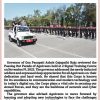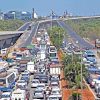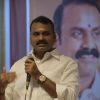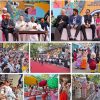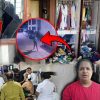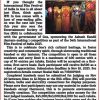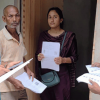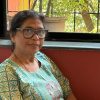Goa is abuzz with excitement as vintage bike and car owners, users, collectors and fans are decking […]
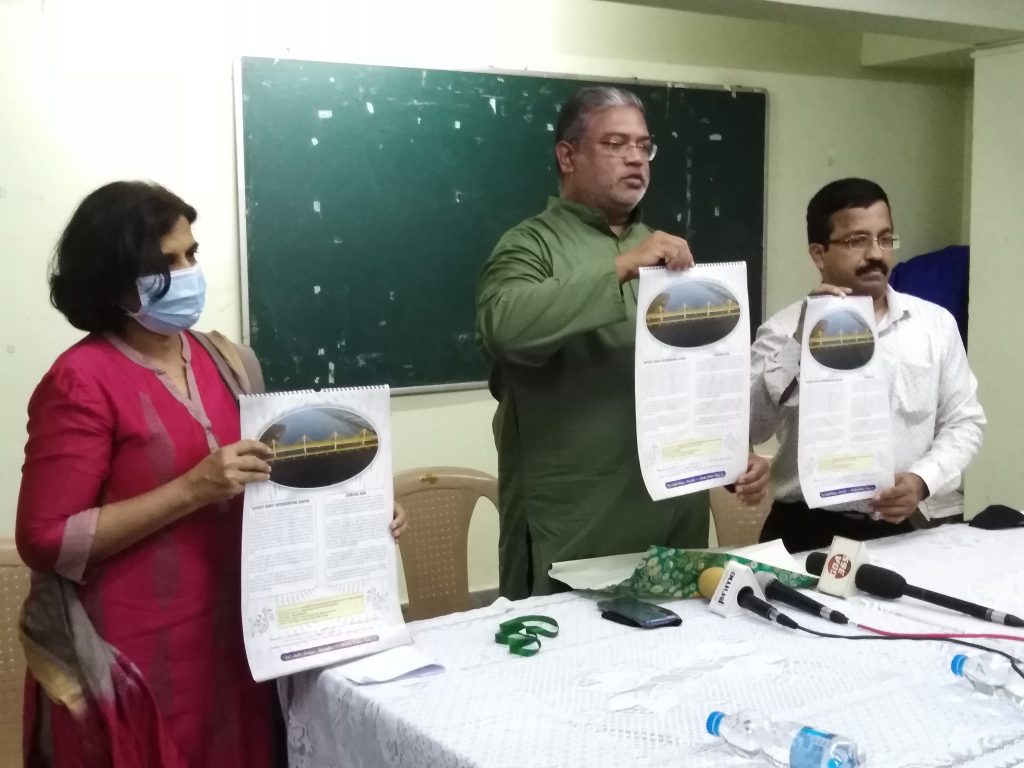
EMPOWER THE DISABLED FOR THE LARGER GOOD OF SOCIETY!
Dec 12- Dec 18, 2020, MIND & BODY, HEART & SOUL December 11, 2020On International Day of Persons with Disabilities (December 3) Caritas Goa and the District Early Intervention Centre (DEIC) released a very educative wall calendar focusing on various disabilities like blindness, spastic diplegic cerebral palsy, Down Syndrome, Autism Spectrum Disorder, slow learners, deafness, fragile X syndrome, intellectual disability, congental talipes equines varus (CTEV) or club foot, in born errors of metabolism and more…. this year the focus is on building an inclusive, accessible and sustainable post-Covid-19 world for the disabled. Above (l to r) Dr Ira Almeida of DEIC, Fr Maverick of Caritas and Avelino D’Sa of DRAG with calendar.
By Pankajbala R Patel
International Day of Persons with Disabilities on December 3 comes and goes but a lot more needs to be done to empower the disabled population of India…new vision and imagination alone can bring equality, fraternity and liberty for this segment of the country’s population.
WORLD Disability Day is celebrated on December 3 and it is high time we seriously redressed the question: Why on earth shouldn’t society and government powers-that-be take an interest in empowering the disabled? Nobody really knows or everybody knows! If there’s one person who has over the years tried to create a consciousness about taking disabled people seriously, seeking empowerment for them so they adjust more fruitfully and happily in mainstream society, it is Avelino D’sa, president of Disability Rights Association of Goa (DRAG), Avelino De Sa.
And of course, Fr Maverick Fernandes (director, Caritas) who at this year’s International Day of Persons with Disabilities media meet at the Institute Piedade Hall in Panaji, released a useful calendar to educate members of the public at large about disabilities which many of us may still be brushing into a corner to hide them.
Dr Ira Almeida (Nodal officer, DEIC) focused on how much more the government and individuals can do to improve the quality of life of those who suffer from minor to more critical disabilities in our society. There are only two goals which are a challenge to execute. First, she said, we must promote the empowerment of the disabled in Goa by mainstreaming them to the extent possible; and secondly it is also necessary to empower and enable the caregivers.
Dr Almeida said that once people with disabilities are helped to cope with pain, their restricted mobility, psychological and personality fears and not least of all social isolation and stigma attached to disability – it is possible to enable the disabled to fit into normal society and do well for themselves. In this respect, it is essential to empower caregivers in institutional and individual circles.
Public healthcare providers are not able to meet the full extent of the daily needs of those with disabilities, but we can “train a second level of informal interventionists to do this.” Health, she reminded, is impacted in several ways for the disabled too. Here too health is defined as a state of physical, mental and social wellbeing and not merely absence of disease.
This is certainly true for the disabled who suffer CP, Down’s, autism, deaf-mute limitations and so on and there are personal and environmental factors which handicap them. For example, negative attitudes, inaccessible transport, no consideration for the disabled and their needs in public by way of creating facilitating access for them and their wheelchairs or whatever hardware or gadgets is there to enable them to live their life as normally as possible. So that they need not feel like they do not belong outside the home but must spend their lives indoors!
She pointed out that the disabled manage very well once they are facilitated in a gamut of ways and with a primary infrastructure. The disabled too, it must be remembered, have general health problems and needs like anyone else. Issues which need to be redressed are accessibility due to physical barriers, cost of health care, transportation and caretakers, inadequate sensitivity by health staff, lack of protection during emergencies as during the current Covid-19 pandemic (the disabled too are vulnerable to the contagion but no special facility was set up for them)!
The disabled are affected by the limitations of their disability in long term perspective but perhaps the most important factor of mental health issues is never taken into account. Mental health and emotional issues interact and can leave a dependent handicapped person feeling helpless, hopeless and depressed. Social issues also include society’s perceptions which are more to do with myths and superstitions, negative vibes and the stigma of living with disability. Children are particularly vulnerable as they are unable to take charge of their lives.
We must understand that those with disabilities also feel challenged by the poor quality of their life and are affected by the despair of “Why me, God?” They need spiritual as well as philosophical sustenance just as normal folk do. Disability is not always obviously visible as in the cases of LD, ASD or ADHD — and if they remain undiagnosed — cause immense suffering during the early years when schooling is introduced. We have every now and again seen various kinds of abuse of disabled persons and especially in respect of sexual abuse.
Stressed Dr Ira Almeida in her keynote address at the media meet, “People with disabilities are particularly vulnerable to predators of any kind – sexual, commercial and social.” But there is some good news too! For example, most parents in India do by and large consider their challenged and disabled children as God’s gifts and will do anything to make life easy and rewarding for them. In India we also have the extended family support of grandparents, close family members who are happy to help out as and when required. Parents of disabled children are invariably deeply grateful and appreciative for whatever help and care they may receive by way of private or public schemes for the disabled.
It is a fact that the commonest cause of “mental retardation” is asphyxia at birth and a lot is being done now to deal with this. There are medical training programs to improve neonatal care and such situations are receding, the government has several programs to improve maternal nutrition and eliminate nutritional deficiencies which could be the root cause of many a congenital defect.
However, overall the scene for the disabled people of India is not so rosy, much more has to be done to activate society at large so that the community of handicapped persons is seen as a blessing and boon – it’s all to do with how we perceive it at individual and collective level. And are willing to meet the needs of those who are handicapped in a myriad ways little and not so little…after all, disability and how it impacts life and health go hand in hand.
Clearly, there is a real need for integrated one-stop multidisciplinary services like the DEIC, liaisoning with other agencies in the field, palliative care services, pain relief procedures, access to home care, and in general strengthening of rehabilitation services with the use of appropriate technology. For example, we have a quadriplegic doctor who is taken to work daily by his caregiver to office where he works as a medical transcriptionist!
The president of (DRAG), Avelino de Sa, who is himself a person with disability, in his brief address, said that a lot more needs to be done at ground level to make persons of disability feel at home in Goa. DRAG is a registered charitable society which has for the last more than 16 years been engaged in bringing persons with disability into mainstream areas. According to him Goa has about 45,000 persons of disability – and for one thing at least all the 40 government buildings can be made accessible for them. Helping the disabled generously and with empathy and sympathy only indicates how a society is mature in its mindset and vision for those who need a helping hand up to equality, fraternity and liberty or so to speak. In his opinion the laws exist, the funds are allotted, but they remain on paper and don’t get executed in totality. They have recently submitted a memorandum to Chief Minister Pramod Sawant and hope he will take act on it so that the Goa’s handicapped and disabled persons may live a qualitatively better life.
Alas, our people with disabilities are still by and large perceived as useless and a burden on family and society, so consequently little or token gestures are the rule, maybe just to ease the conscience perfunctorily. But if one looks at the larger picture we may see how lack of an infrastructure for variously disabled persons keeps them needlessly home-bound or special institution-bound. Only too often we see how educational institutions, hospitals, cinema halls, airports, other public places having no toilet facilities for the disabled. Forget about jobs for the disabled whereby they can earn a living with dignity – only with one or two adjustments. There is also the important matter of public transportation which is disabled people-friendly.
All this and much more. Perhaps one of these days all of us higher up in the echelons of governance or lower down in our educational institutions and business houses will see how vital human resource persons of disability are but indeed, overlooked and wasted in real terms. All for want of vision and imagination and last but not least of all, compassion for those against whom the dice is loaded in some way or another, who seek to inspire the best in each one of us but often fail or so to speak.
How many disabled?

According to the Right of Persons with Disabilities Act 2016 list in India we have about 21 medical conditions recognized as disabilities needing a support system to empower and enable a livelihood and a life of dignity. Amongst the conditions listed are blindness, low vision, leprosy cured persons, hearing impairment, locomotor disability, dwarfism, intellectual disability, autism spectrum disorders, cerebral palsy, hemophilia, sickle cell disease, thalassemia, Parkinson’s disease, chronic neurological conditions, muscular dystrophy, multiple sclerosis, specific learning disorders, mental illness and intellectual disabilities, leprosy, low blood disorders and interestingly enough, the survivors of acid attacks.
Roughly 2.1% of the country’s population has been listed as disabled, of this 12.6 million are male and 9.3 million are female. There are more disabled persons in rural areas. Needless to say given special education and training as well as the equipment designed for them to use to make their life easier and rewarding people with disabilities are a human resource too. It is something many third world poor countries like India don’t realize while at the same time they seek entry first world status without investing enough on the hardware and software learning required to bring our small disabled population on par with that in the countries of the West!
